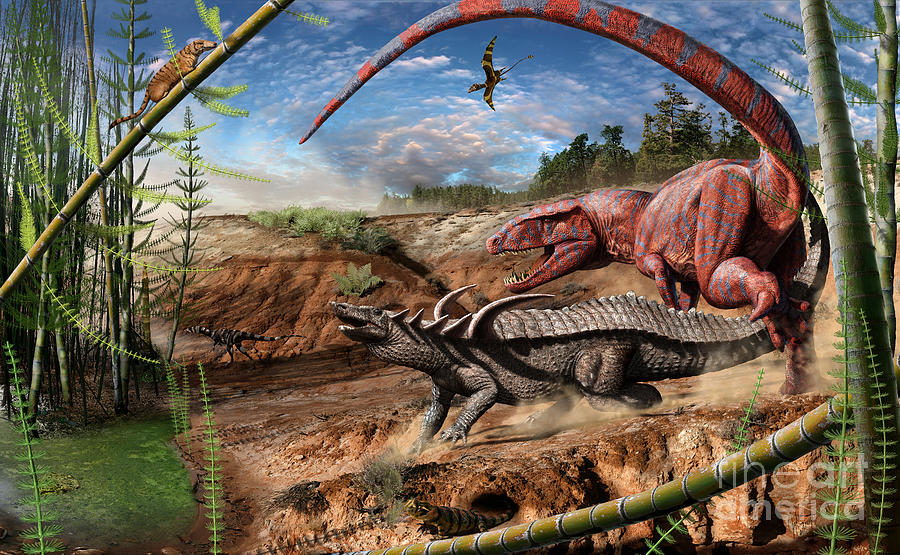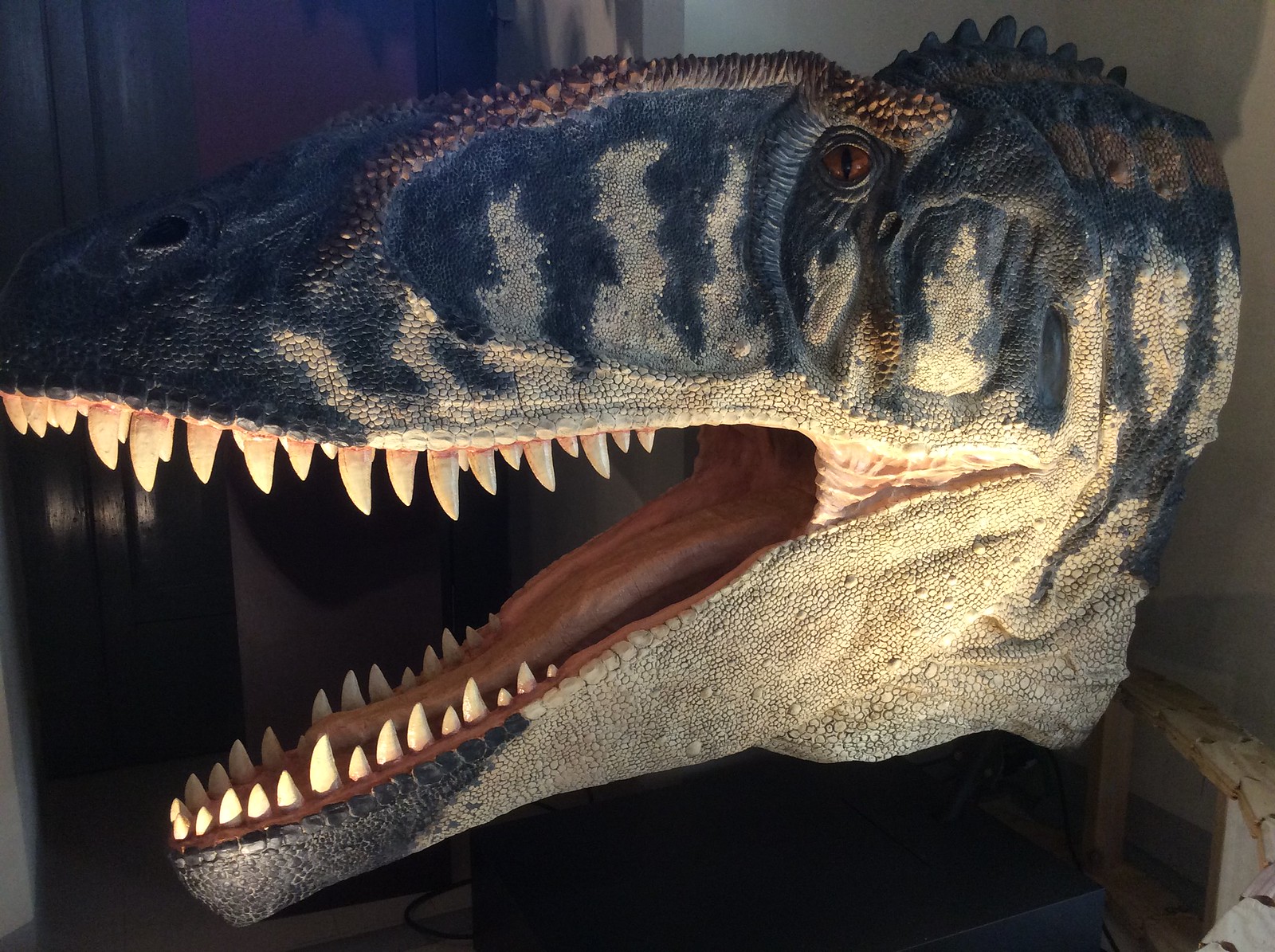Post by Infinity Blade on Jul 1, 2014 3:04:53 GMT 5
Postosuchus kirkpatricki
Postosuchus, meaning "crocodile from Post", is an extinct genus of rauisuchian reptiles comprising two species, P. kirkpatricki and P. alisonae, that lived in what is now North America during the Middle and Late Triassic (about 228-202 million years ago). Postosuchus is a member of the clade Pseudosuchia, the lineage of archosaurs that includes modern crocodilians (the other main group of archosaurs is Avemetatarsalia, the lineage that includes non-avian dinosaurs and their descendants, birds). Its name refers to Post Quarry, a place in Texas where many fossils of the type species, P. kirkpatricki, were found. It was one of the apex predators of its area during the Triassic, larger than the small dinosaur predators of its time (such as Coelophysis). It was a hunter which probably preyed on dicynodonts and many other creatures smaller than itself. The skeleton of Postosuchus is large and robust with a deep skull and a long tail. The total body length is about 4 to 5 metres (13 to 16 ft). Although the heavy build of the skeleton suggests that Postosuchus walked on all four limbs, the extreme shortness of the forelimbs relative to the hind limbs is a strong indication that Postosuchus was able to walk on two legs and may even have been committed to bipedal locomotion. Postosuchus was one of the largest carnivorous reptiles during the late Triassic. Adults reached around 4 m (13 ft) in length from snout to tail tip and their mass might have ranged from 250 to 300 kg (550 to 660 lb). It had a massively built skull bearing dagger-like teeth. The neck was elongated, expanding to a short torso and long tail.

Kelenken guillermoi
Kelenken is an extinct genus of giant flightless predatory birds of the family Phorusrhacidae or "terror birds". K. guillermoi lived in the Middle Miocene, some 15 million years ago, in Argentina along with Argentavis. With a skull 28 inches (71 cm) long (including its 18 inch, 45.7 cm beak), it had the largest head of any known bird. It is the largest species of phorusrhacid. The tarsometatarsus was about 45 cm long. It is not entirely clear how Kelenken captured and killed its prey. As a large flightless carnivore, Kelenken likely chased down and killed its prey with several bone-shattering blows from its massive beak. Another possibility is that it may have picked up its prey item, then proceeded to shake it vigorously in order break its back. It is also possible that Kelenken may have been a scavenger, driving off other predators from their kills with its impressive size.

Postosuchus, meaning "crocodile from Post", is an extinct genus of rauisuchian reptiles comprising two species, P. kirkpatricki and P. alisonae, that lived in what is now North America during the Middle and Late Triassic (about 228-202 million years ago). Postosuchus is a member of the clade Pseudosuchia, the lineage of archosaurs that includes modern crocodilians (the other main group of archosaurs is Avemetatarsalia, the lineage that includes non-avian dinosaurs and their descendants, birds). Its name refers to Post Quarry, a place in Texas where many fossils of the type species, P. kirkpatricki, were found. It was one of the apex predators of its area during the Triassic, larger than the small dinosaur predators of its time (such as Coelophysis). It was a hunter which probably preyed on dicynodonts and many other creatures smaller than itself. The skeleton of Postosuchus is large and robust with a deep skull and a long tail. The total body length is about 4 to 5 metres (13 to 16 ft). Although the heavy build of the skeleton suggests that Postosuchus walked on all four limbs, the extreme shortness of the forelimbs relative to the hind limbs is a strong indication that Postosuchus was able to walk on two legs and may even have been committed to bipedal locomotion. Postosuchus was one of the largest carnivorous reptiles during the late Triassic. Adults reached around 4 m (13 ft) in length from snout to tail tip and their mass might have ranged from 250 to 300 kg (550 to 660 lb). It had a massively built skull bearing dagger-like teeth. The neck was elongated, expanding to a short torso and long tail.

Kelenken guillermoi
Kelenken is an extinct genus of giant flightless predatory birds of the family Phorusrhacidae or "terror birds". K. guillermoi lived in the Middle Miocene, some 15 million years ago, in Argentina along with Argentavis. With a skull 28 inches (71 cm) long (including its 18 inch, 45.7 cm beak), it had the largest head of any known bird. It is the largest species of phorusrhacid. The tarsometatarsus was about 45 cm long. It is not entirely clear how Kelenken captured and killed its prey. As a large flightless carnivore, Kelenken likely chased down and killed its prey with several bone-shattering blows from its massive beak. Another possibility is that it may have picked up its prey item, then proceeded to shake it vigorously in order break its back. It is also possible that Kelenken may have been a scavenger, driving off other predators from their kills with its impressive size.










